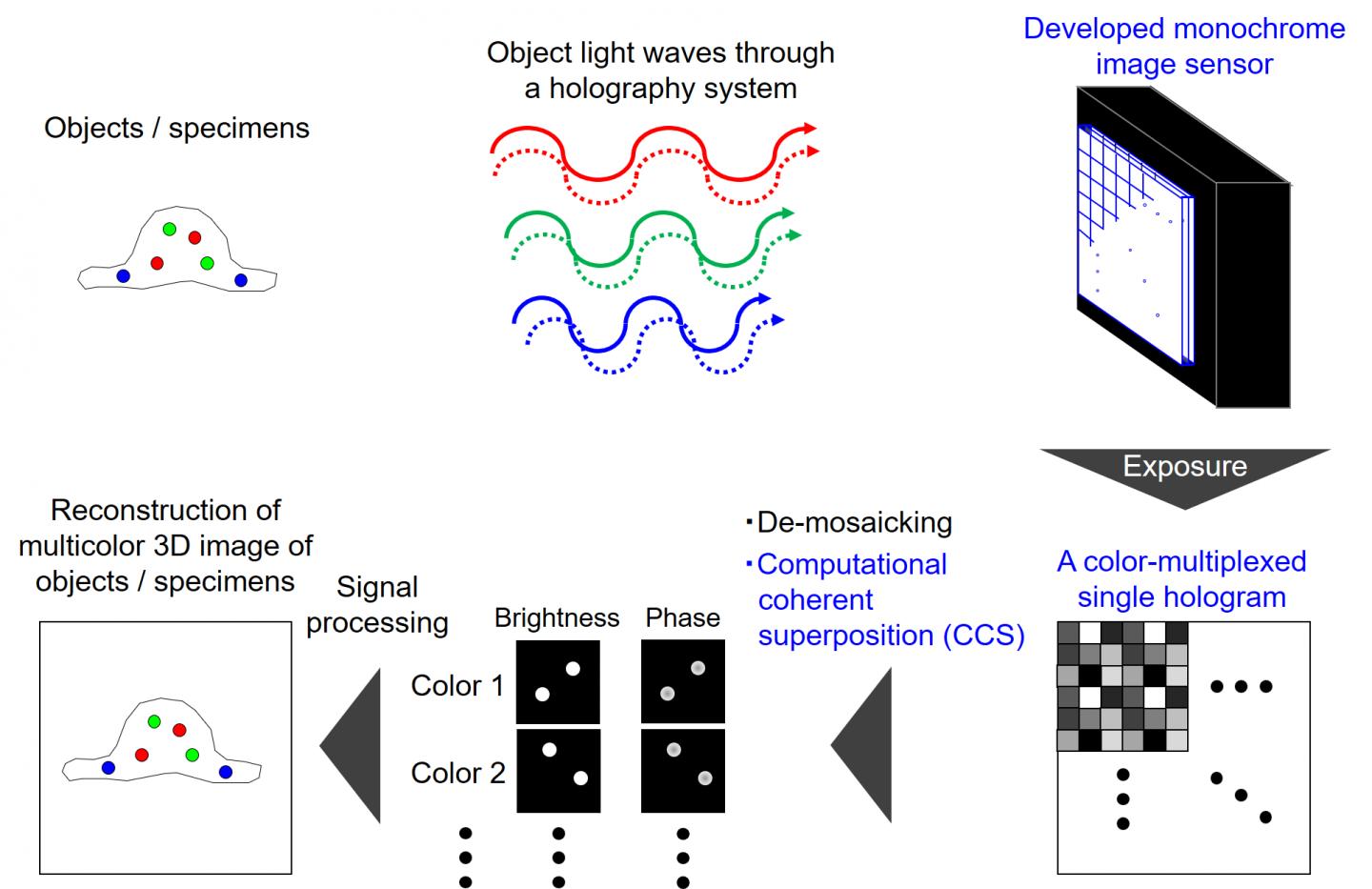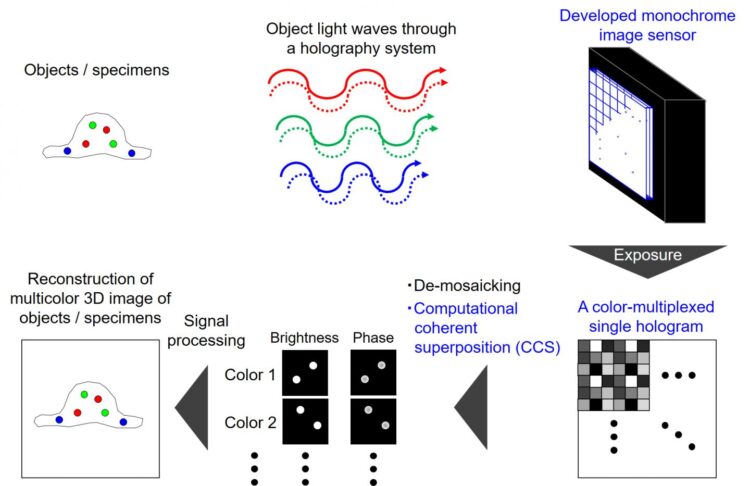The group has realized single-shot color-multiplexed 3D fluorescence microscopy with holography

Credit: National Institute of Information and Communications Technology (NICT), Japan Science and Technology Agency (JST), Toin University of Yokohama, and Chiba University
Abstract
The National Institute of Information and Communications Technology (NICT), the Japan Science and Technology Agency (JST), Toin University of Yokohama, and Chiba University have succeeded in developing a color-multiplexed holography system by which 3D information of objects illuminated by a white-light lamp and self-luminous specimens are recorded as a single multicolor hologram by a specially designed and developed monochrome image sensor. Single-shot color-multiplexed fluorescence holographic microscopy is realized by exploiting digital holography and computational coherent superposition (CCS), with the latter having been proposed by NICT. The developed microscope acquires the color 3D information of self-luminous objects with a single-shot exposure and no color filter array. The developed system does not need a laser light source and has the capability to conduct multicolor 3D motion-picture sensing of biological samples and moving objects at video rate. Further development will be conducted toward multicolor 3D microscopy of extremely weak light such as autofluorescence light and nonlinear light.
This achievement was published in Applied Physics Letters as an open-access paper on July 22, 2020.
Achievements
Simultaneous color 3D sensing of multiple self-luminous objects was demonstrated by recording a single color-multiplexed hologram of fluorescence light. Multicolor 3D imaging with a white-light lamp was also demonstrated with a single-hologram recording. CCS, which is a holographic multiplexing technique, was exploited to record a color-multiplexed hologram on a monochrome image sensor without any color filter. Only a single-shot exposure is required to conduct color fluorescence holographic 3D sensing using the developed system. The number of exposures required to acquire the information is less than 1/250 of that required for a conventional color-multiplexed fluorescence holographic microscope.
The developed system will be useful for applications to high-speed multicolor holographic 3D motion-picture microscopy for spatially and temporally incoherent light and multicolor holographic 3D image sensing of ultimately weak light such as autofluorescence light, nonlinear light including spontaneous Raman scattering light, chemically activated light, and natural light.
Future prospects
- Increasing the recording speed in holographic multidimensional sensing of ultimately weak self-luminous light sources
- Applications to multicolor holographic 3D motion-picture image sensing for spatially incoherent light
###
Media Contact
Hirota Sachiko
[email protected]
Original Source
https:/
Related Journal Article
http://dx.





